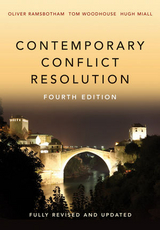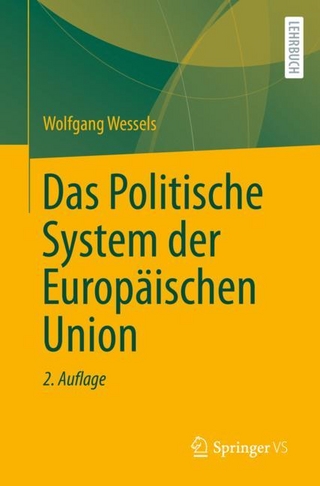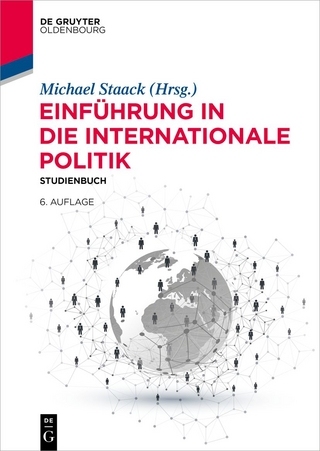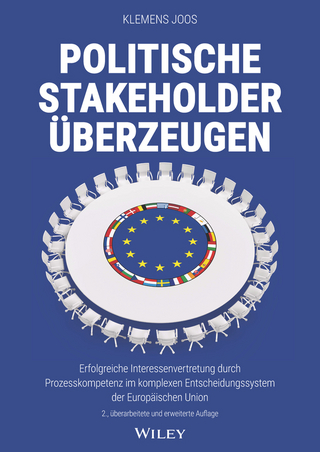
Contemporary Conflict Resolution
Polity Press (Verlag)
978-0-7456-4974-0 (ISBN)
- Titel erscheint in neuer Auflage
- Artikel merken
Contemporary Conflict Resolution is essential reading for students of peace and security studies, conflict management and international politics, as well as for those working in non-governmental organizations and think-tanks.
Oliver Ramsbotham is Emeritus Professor of Conflict Resolution at the University of Bradford, Tom Woodhouse is Adam Curle Professor of Conflict Resolution at the University of Bradford and Hugh Miall is Professor of International Relations at the University of Kent at Canterbury.
List of Figures List of Tables List of Boxes List of Maps Preface Acknowledgements List of Abbreviations PART I CONTEMPORARY CONFLICT RESOLUTION 1 Introduction to Conflict Resolution: Concepts and Definitions Why a Third Edition? Conflict Resolution Models Framework Models Classical Ideas New Developments in Confict Resolution Terminology Structure of the Book Recommended reading 2 Conflict Resolution: Origins, Foundations and Development of the Field Precursors: The First Generation, 1918-1945 Foundations: The Second Generation, 1945-1965 Consolidation: The Third Generation, 1965-1985 Reconstruction: The Fourth Generation, 1985-2005 Recommended reading 3 Statistics of Deadly Quarrels and the Measurement of Peace The Conflict Domain Measuring Peace and Peacefulness Conflicts Trends Conflict Distribution Conflict Types Terrorism and Conflict Conflict Costs Conflict Mapping and Conflict Tracking Recommended Reading 4 Understanding Contemporary Conflict Theories and Frameworks The Context for an Evaluation of Conflict Resolution Theory Edward Azar's Theory of Protracted Social Conflict (PSC) Have More Recent Theories Confirmed or Discredited PSC? An Interpretative Framework for Conflict Analysis The Analysis and Mapping of Complex Conflict Systems Conclusion Recommended Reading 5 Preventing Violent Conflict Causation and Prevention of Wars Emergent Conflict and Peaceful Change Deep or Structural Prevention Early Warning Light or Operational Prevention The Adoption of Conflict Prevention by International Organizations Evaluation of Conflict Prevention's Effectiveness Case Study: Preventive Crisis Management in Kenya Conclusion Recommended Reading 6 Containing Violent Conflict: Peacekeeping First- and Second-Generation UN Peacekeeping, 1956-1995 War Zones, War Economies and Cultures of Violence Third-Generation Peacekeeping: What Count As Peace Operations? Redefining Peace Operations Third-Generation Peacekeeping and Human Security Conflict Resolution and the Theoretical Debate About Peace Operations Case Study: Somalia 1991-2010 Conclusion Recommended Reading 7 Ending Violent Conflict: Peacemaking The Challenge of Ending Violent Conflict De-escalation, Ripeness and Conditions for Ending Violent Conflict Mediation and Third-Party Intervention Peace Processes: Turning Points, Sticking Points and Spoilers Negotiations and Settlements Case Studies Conclusion Recommended reading 8 Post-War Reconstruction Postwar Peace Operations Intervention, Reconstruction and Withdrawal (IRW) Operations 1989-2009 Filling the Postwar Planning Gap The International Postwar Reconstruction Blueprint: Dilemmas and Tradeoffs Current Controversies Summary from a Conflict Resolution Perspective The Question of Evaluation Conclusion Recommended reading 9 Peacebuilding The Mainstreaming of Peacebuilding Models in International Policy Peacebuilding Debates and Discourses: Beyond Blueprints and Towards an Emancipatory Conflict Resolution Ethic Hybrid Peace and Peacebuilding from Below: a Conflict Resolution Perspective Conclusion: Peace Education and Peacebuilding from Below in the Discourse of Conflict Resolution Recommended reading 10 Reconciliation Four Meanings of Reconciliation Between Separation and a Fusion of Identities Dealing with the Past: Trauma and Atrocity Peace or Justice? Not Exclusive Alternatives Alternative Paths to Reconciliation Reconciliation and Conssict Resolution: Going Down the Escalation Ladder Recommended reading PART II COSMOPOLITAN CONFLICT RESOLUTION 11 Towards Cosmopolitan Conflict Resolution The Nature of the International Collectivity The Arrow of the Future: Conflict Resolution and World Politics Conflict Resolution and International Institutions Conflict Resolution and International Law Conflict Resolution and Cosmopolitan Democracy Conflict Resolution and Terrorism Recommended reading 12 Environmental Conflict Resolution Tragedies of the Commons Conflicts of Interest Over Climate Change Multilevel Negotiations International Negotiations Recommended reading 13 Gender in Conflict Resolution Stage 1: Making Women Visible as Agents of Change Stage 2: Data-Collection and Case Studies Stage 3: Rethinking Conflict Resolution Theory Stage 4: Mainstreaming Gender in Policy-Making and the Empowerment of Women Case Study Recommended reading 14 The Ethics of Intervention Conflict Resolution Roles Conflict Resolution Intervention Principles From Just War to Just Intervention Conclusion: International Ethics, International Law and International Politics Recommended reading 15 Culture, Religion and Conflict Resolution How Far Down Does Cultural Variation Reach? Culture and Conflict Resolution: Three Responses Religion and Conssict Resolution: Islamic and Buddhist Approaches Conclusion Recommended reading 16 Conflict Resolution in Art and Popular Culture Creative Networks: Museums, Visual Arts, Music and Theatre in Conflict Resolution Sport and Conflict Resolution Building a Global Peace Culture Conclusion Recommended reading 17 Conflict Resolution, the Media and the Communications Revolution The Mass Media and Conflict Resolution Conflict Resolution in the Age of Cybertechnology From Cyberwar to Cyberpeace Recommended reading 18 Managing Linguistic Intractability: Dialogue, Discourse and Radical Disagreement Linguistic Intractability: the Challenge of Radical Disagreement When Conflict Resolution Fails Acknowledging, Exploring and Understanding Agonistic Dialogue Managing Radical Disagreement: Promoting a Strategic Engagement of Discourses The Israeli-Palestinian Conflict: a Case Study Recommended Reading 19 Conflict Resolution: Theories and Critiques The Pluralist-Cosmopolitan Heartland of Conflict Resolution The Realist Critique The Critical Theory Critique The Post-Structural Critique Non-Western/Non-Northern Critiques Recommended reading 20 Conflict Resolution and the Future Emergent Conflicts Future Drivers of Conflict The Conflict Resolution Response Conflict Resolution: the Next Generation Conclusion Notes References Index
| Erscheint lt. Verlag | 11.3.2011 |
|---|---|
| Verlagsort | Oxford |
| Sprache | englisch |
| Maße | 170 x 246 mm |
| Gewicht | 962 g |
| Themenwelt | Sozialwissenschaften ► Politik / Verwaltung ► Europäische / Internationale Politik |
| Sozialwissenschaften ► Politik / Verwaltung ► Vergleichende Politikwissenschaften | |
| Schlagworte | Friedensforschung • Konfliktlösung |
| ISBN-10 | 0-7456-4974-2 / 0745649742 |
| ISBN-13 | 978-0-7456-4974-0 / 9780745649740 |
| Zustand | Neuware |
| Haben Sie eine Frage zum Produkt? |
aus dem Bereich



